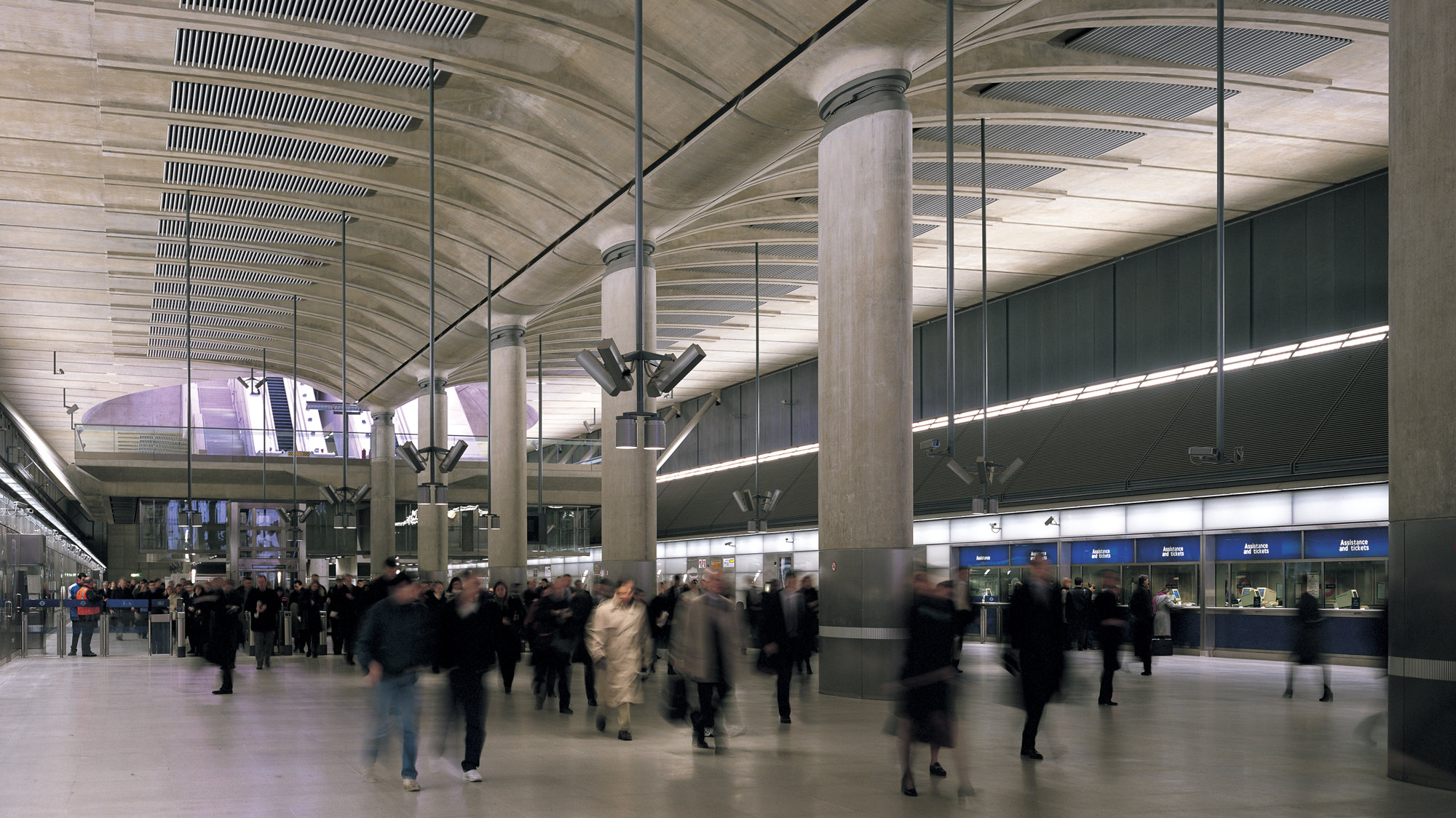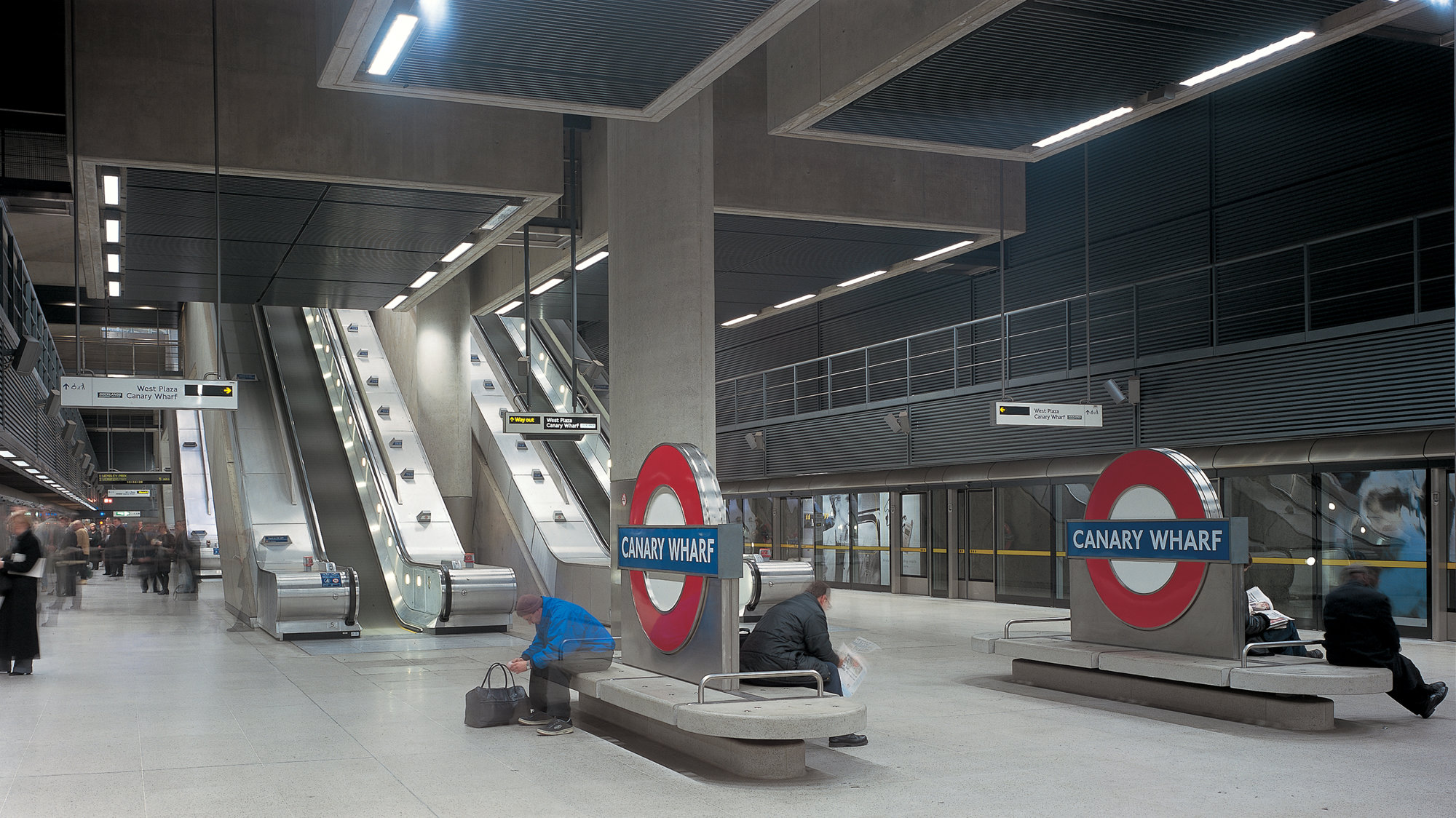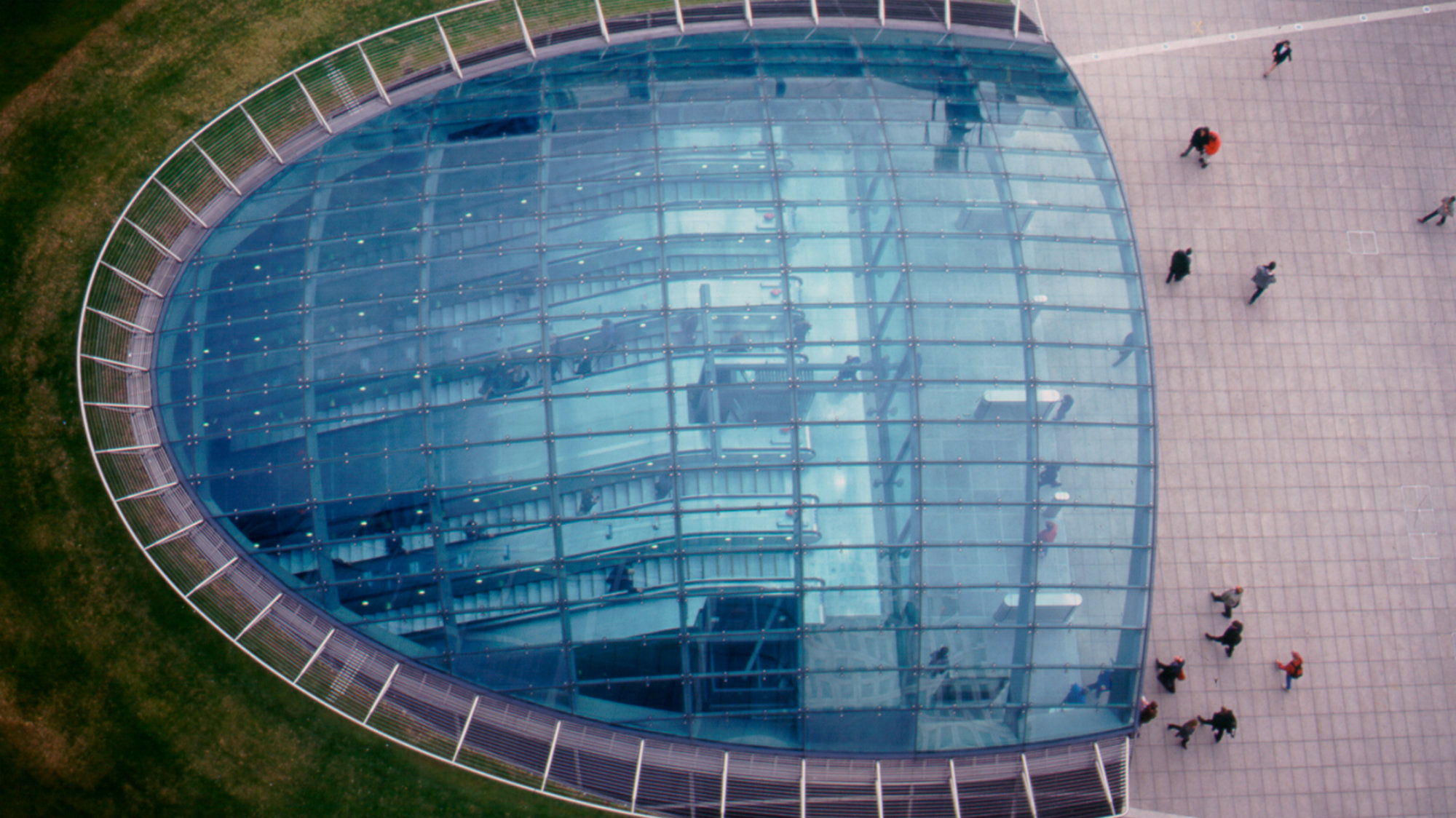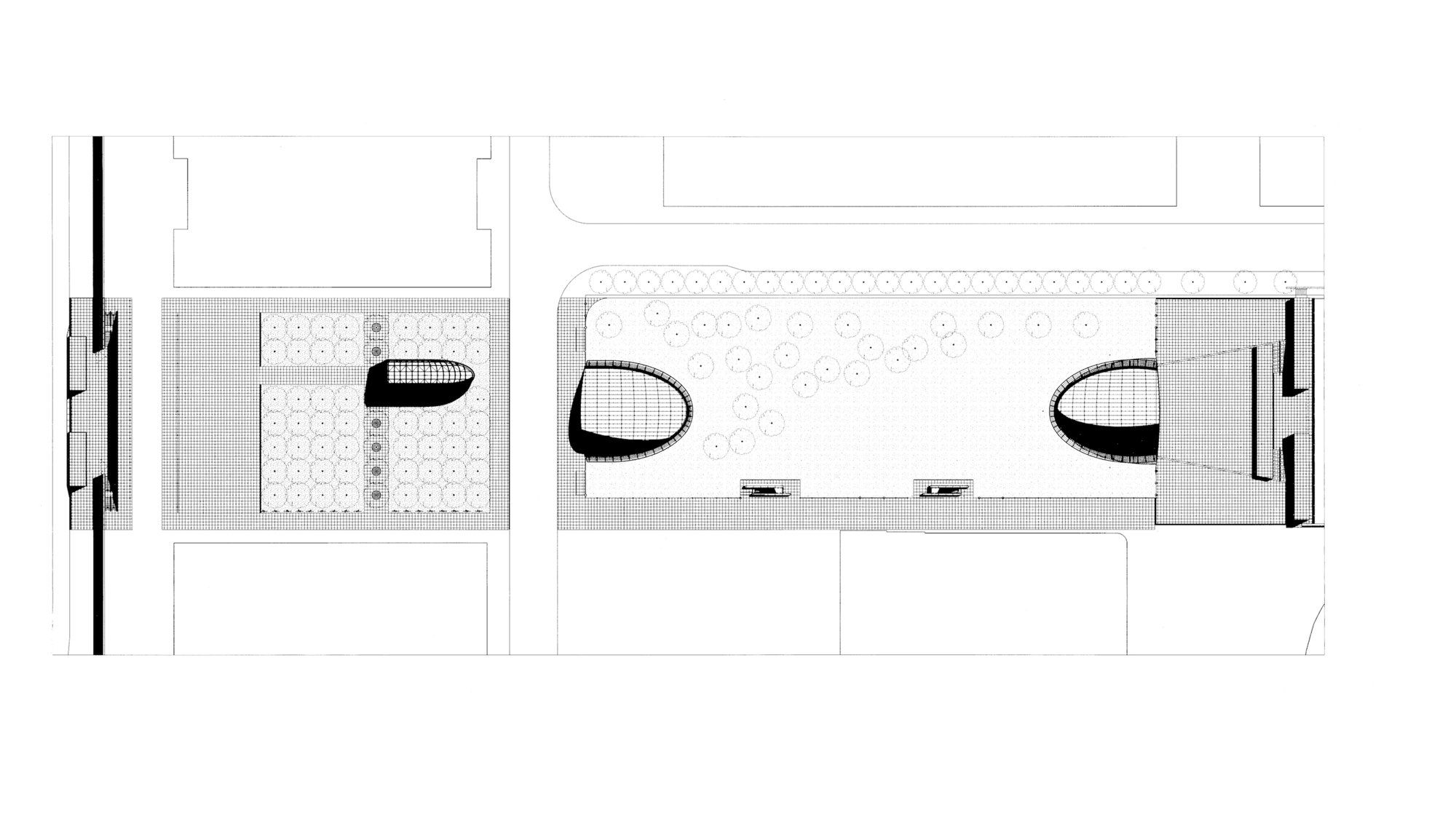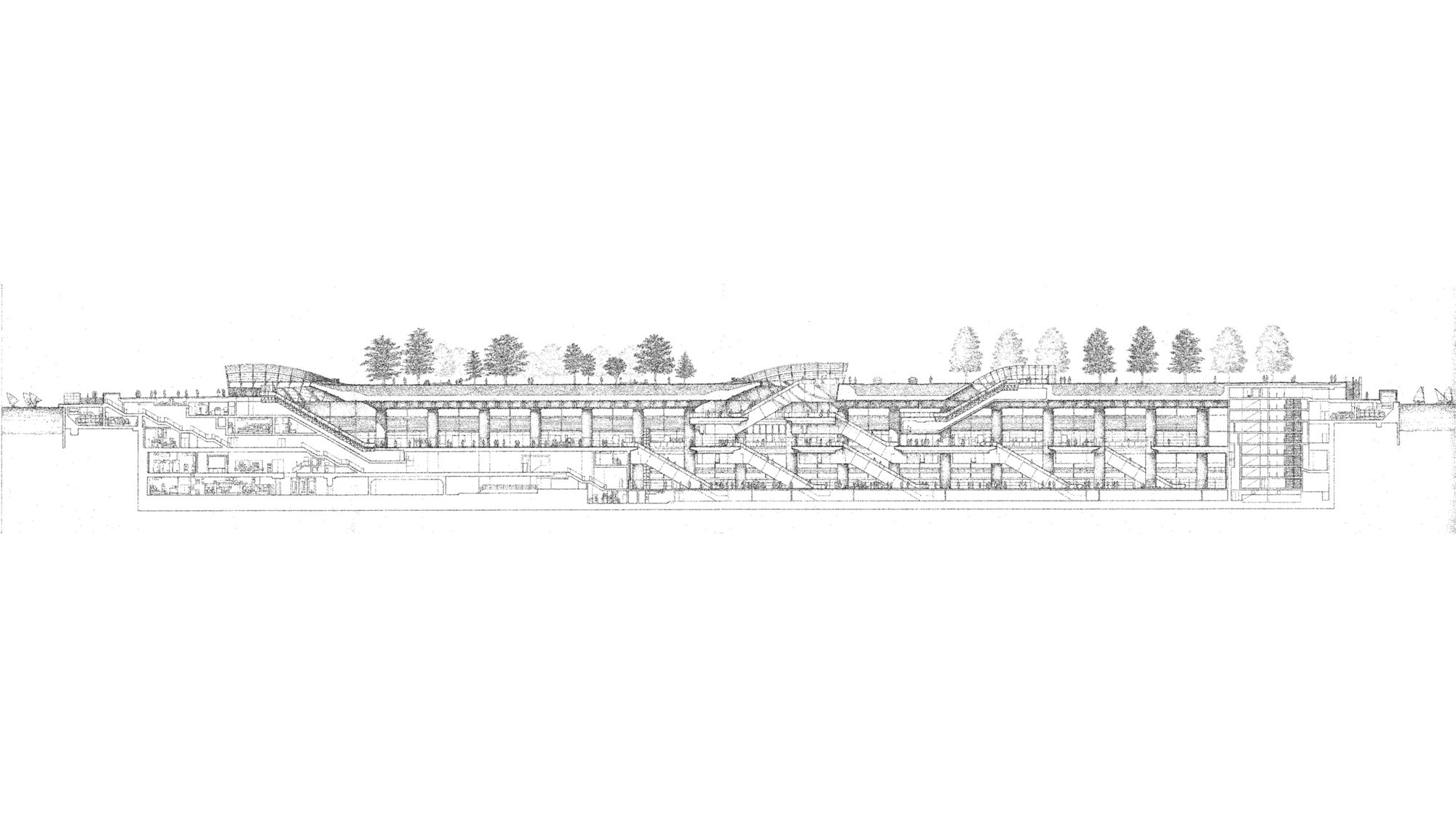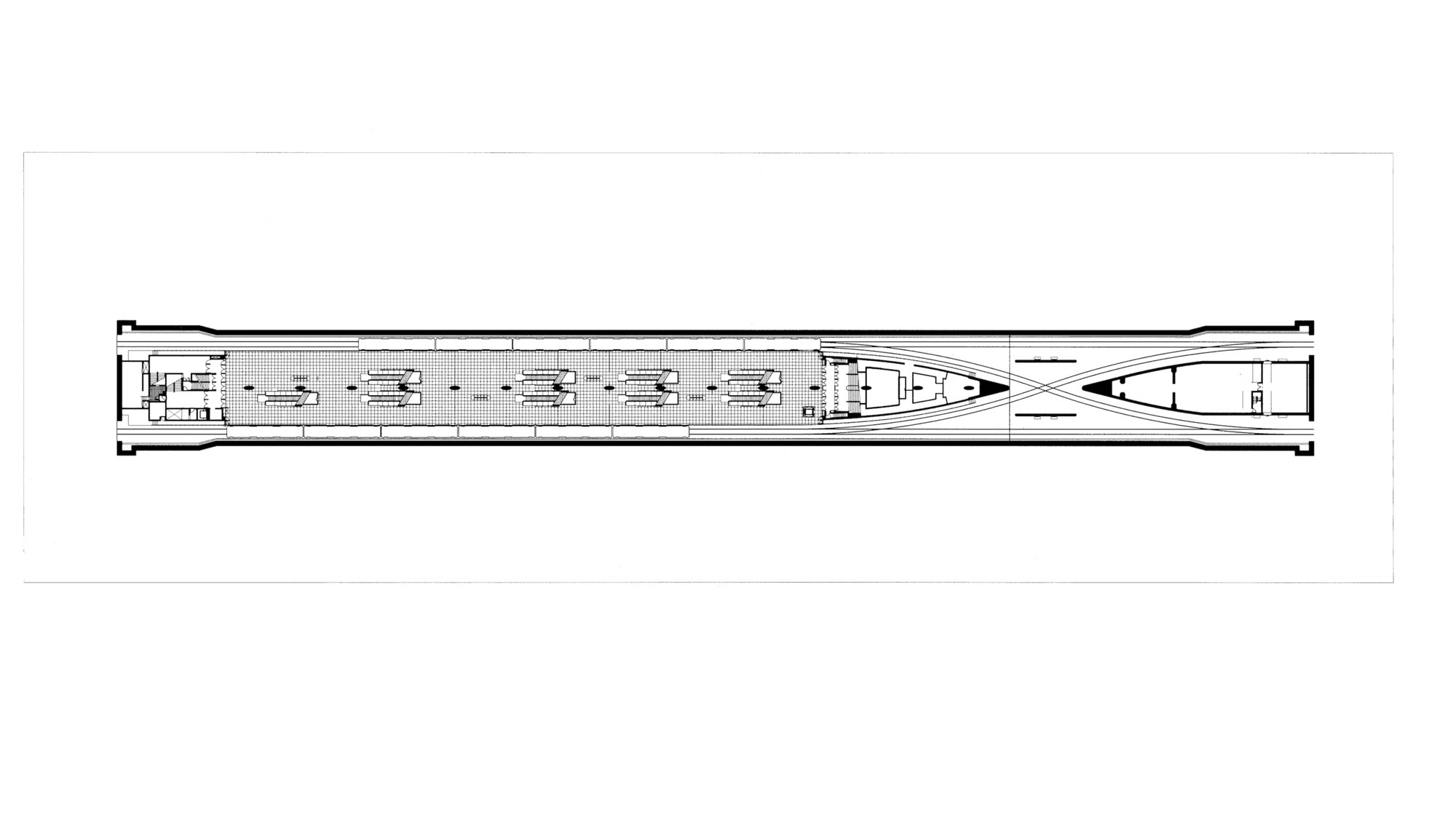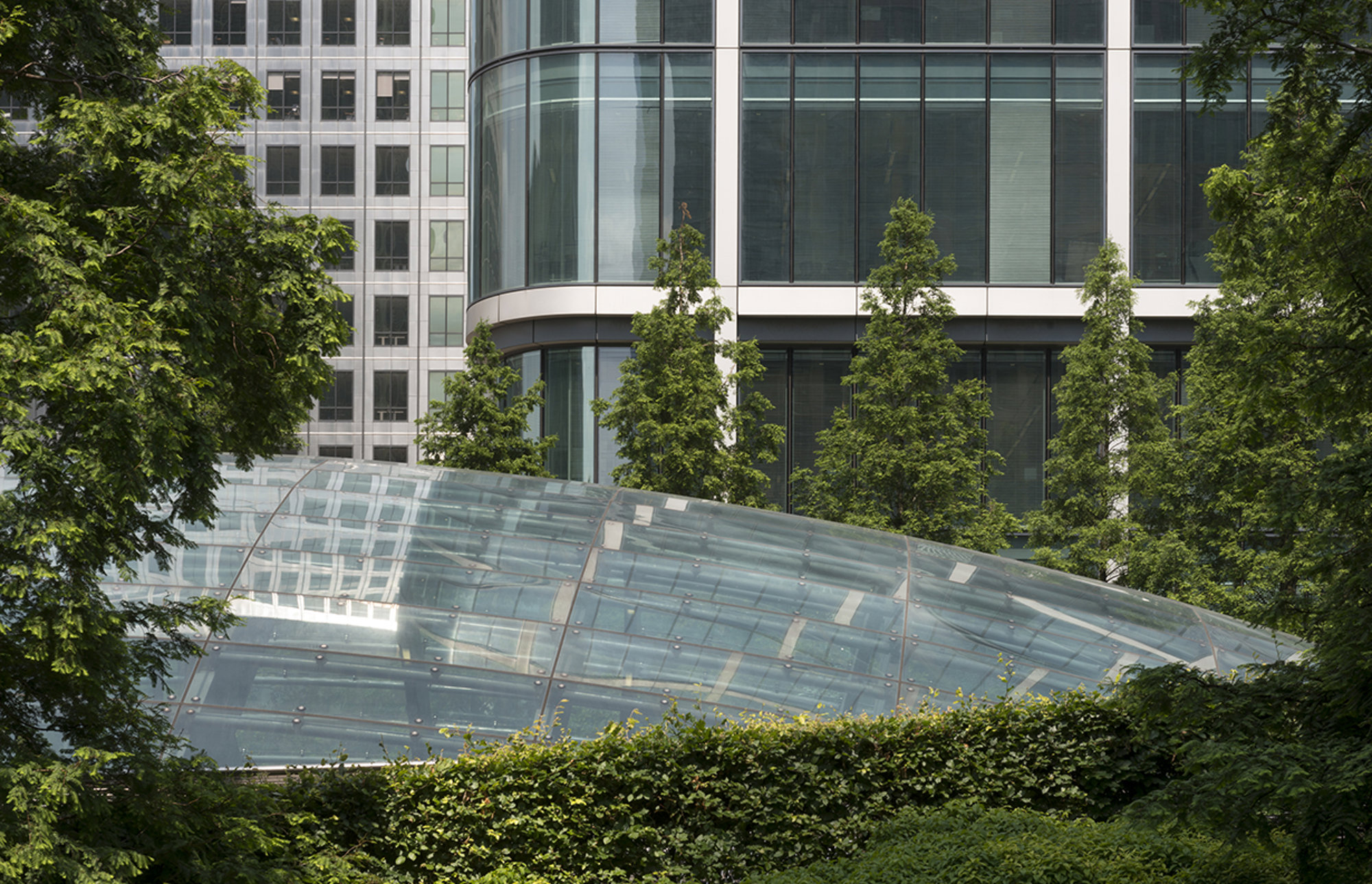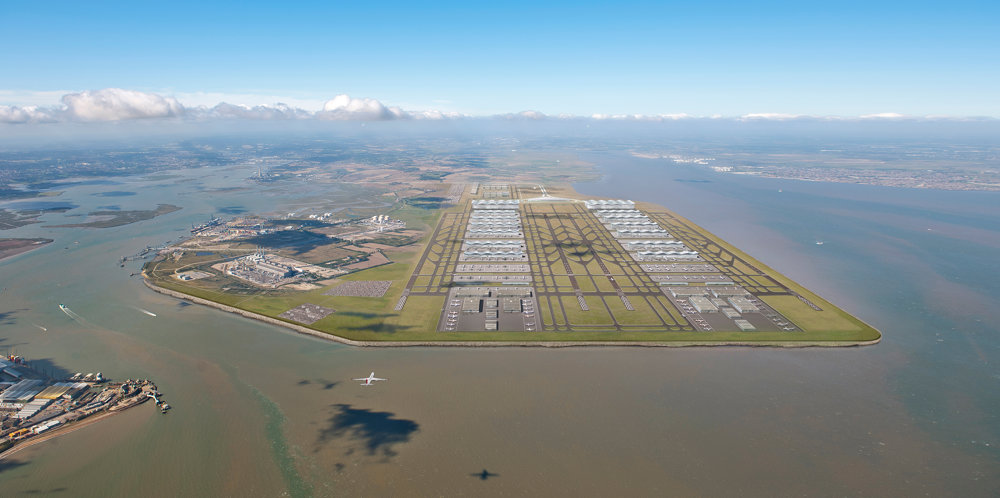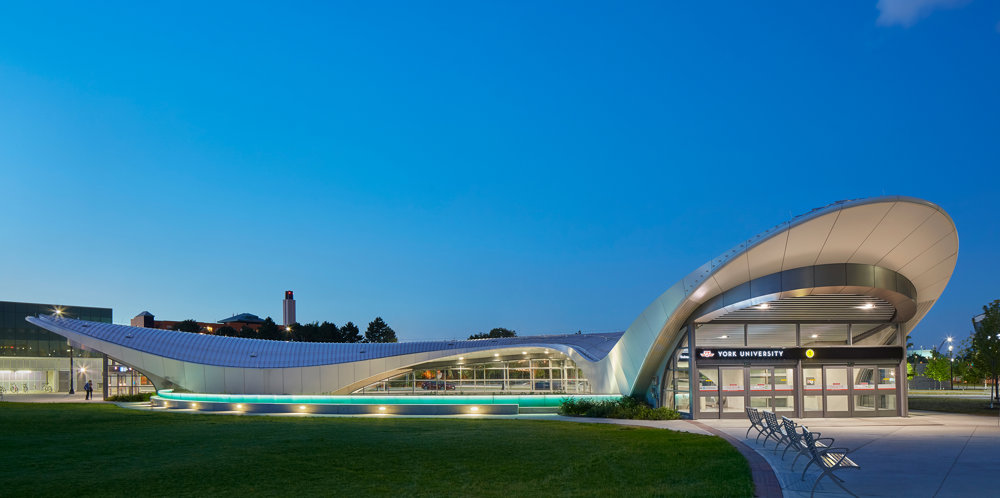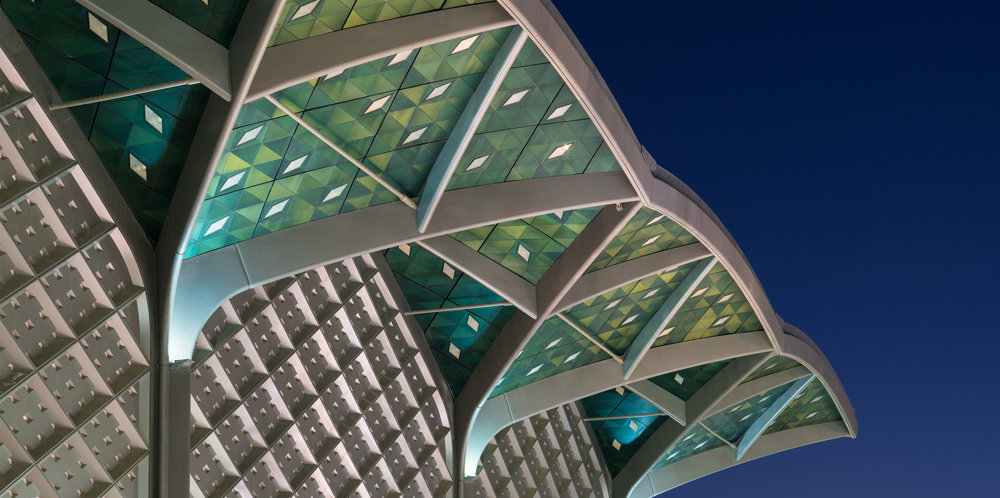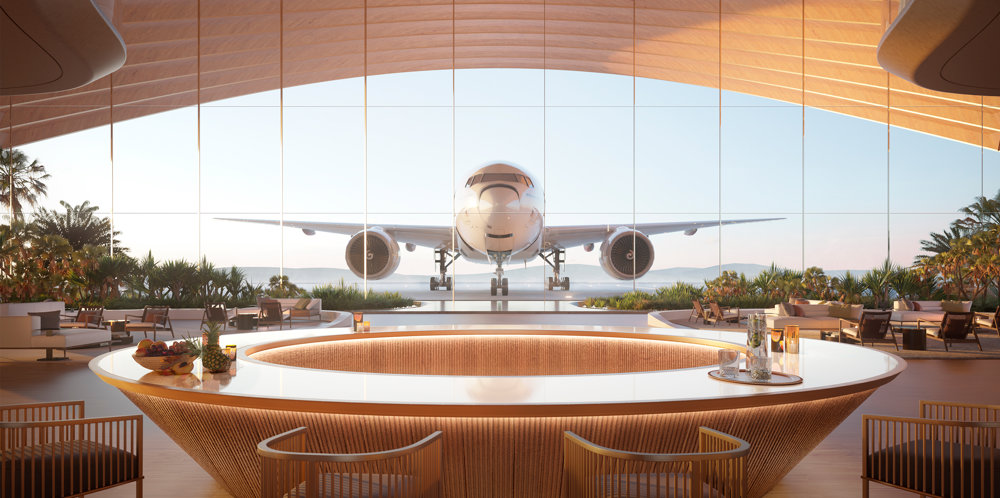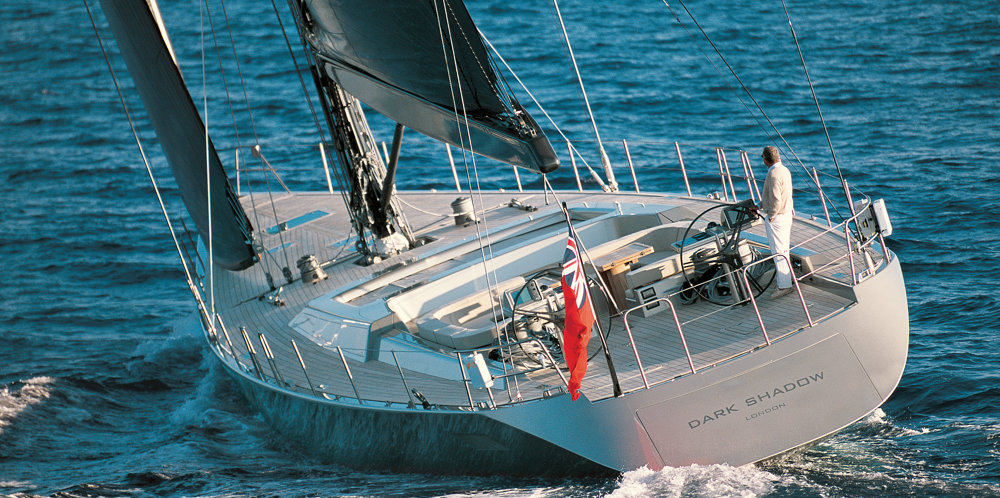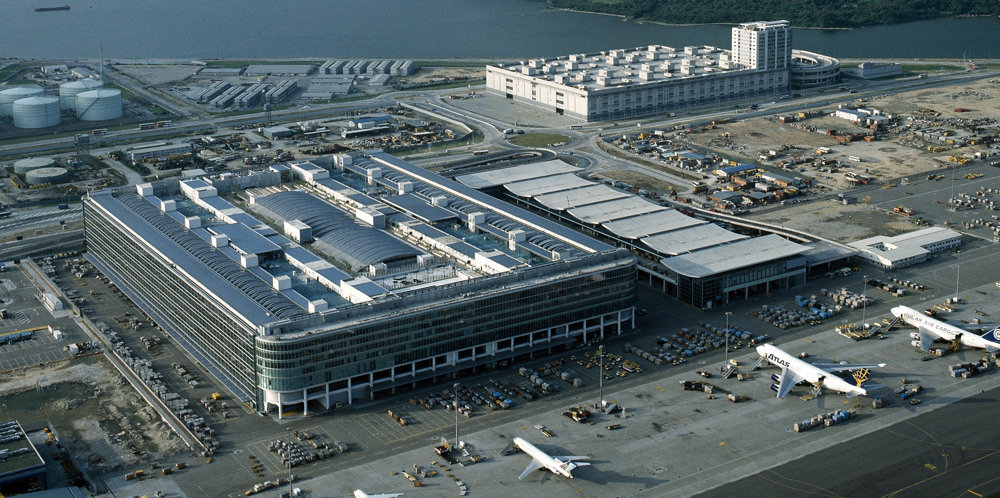The Jubilee Line extension is one of the greatest acts of British architectural patronage of recent years, comprising eleven new stations by as many architects. Canary Wharf Station is by far the largest − when the development of the area is complete, it will be used by more people at peak times than Oxford Circus, currently London's busiest Underground destination.
The 300-metre-long station is built within the hollow of the former West India Dock using cut-and-cover construction techniques. At ground level, the station roof is laid out as a landscaped park, creating Canary Wharf's principal recreation space. The only visible station elements are the arcing glass canopies that cover its three entrances and draw daylight deep into the concourse. By concentrating natural light dramatically at these points, orientation is enhanced, minimising the need for directional signage. Twenty banks of escalators move passengers in and out of the station, while administrative offices, kiosks and other amenities are sited along the flanks of the ticket hall, leaving the main concourse free and creating a sense of clarity and calm.
Due to the high volume of station traffic, the guiding principles in the design were durability and ease of maintenance. The result is a simple palette of hard-wearing materials: fair-faced concrete, stainless steel and glass. This robust aesthetic is most pronounced at platform level where the concrete tunnel walls are left exposed. In contrast to the simplicity of its materials, the station introduces many complex security and technological innovations: glazed lifts enhance passenger comfort and deter vandalism; access to the tracks is blocked by platform-edge screens, which open in alignment with the doors of the trains. Servicing is also enhanced, with access via maintenance gangways that allow the station to be maintained entirely from behind the scenes.









